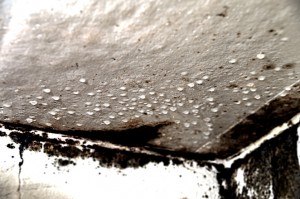7 Top Tips for Identifying Water Damage
If you are buying a house, it is very difficult to control your enthusiasm and spot any potential problems. If you miss a problem in your potential new home, it could lead to serious structural problems in the future. This is especially the case for water damage, which can have significant effects over the years and cause costly problems.
These seven top tips should help you to identify any potential issues.
Look for Stains on Ceilings and Walls:
When viewing a house, many of us fail to look up, but stains on the ceiling and walls can be a sign that the home has had water damage in the past. The stains could be yellow, brown or black. They may even be a faint outline, but all of these types of stains could indicate the potential for ongoing damage.
Be on Guard for Smells:
While many sellers may put on a fresh pot of coffee or bake bread, the underlying musty smell of water damage is hard to disguise. If there are certain areas of the house such as the basement where the smell intensifies, it could be a sign that there is mildew or mold. This could suggest the potential for wood rot or a water leak.
Check Doors, Windows and Walls:
Drywall and wood swell as they absorb water and this causes buckling to doors, window frames or walls. While this buckling could be the result of a single event, which has since been repaired, such as a burst water pipe, it could also be the result of a hidden small leak, which has been causing damage over time.
Watch for Fresh Paint:
While fresh paint alone doesn’t necessarily indicate a problem, since many sellers freshen up their home before putting the house on the market, fresh paint can also be used to hide water damage. Warning signs are if only a particular section of wall or ceiling, or only a single room has been repainted. That should be suspect.
Feel the Floor:
If you are walking through the house and notice a “spongy” feeling stepping on the floors, it could be a sign of a problem. This is especially the case in kitchens or bathrooms which can be prone to water damage, swelling the floorboards.
Check Whether the Landscaping Slopes Towards the House:
If the lawns or landscaping slope towards the house, you may find that water does not drains properly around the property and may pool. This increased water could “wick” up the wood, which has the potential for serious rot and structural damage. If you notice evidence of movement in the foundations, structural settling or damp crawlspaces, it could also indicate incorrect drainage causing damage.
Check Toilet Bowls and Faucets for Stains:
Discoloration or scale on toilet bowls; bathtubs or washbasins could indicate a problem with hard water. If left untreated, hard water has the potential to corrode plumbing and compromise the performance and efficiency of washing machines, dishwashers and water heaters. Fortunately, hard water can be easily treated with a water softener, but don’t let the realtor know, as you could be able to use the staining to negotiate a better deal.
About The Author:
Greg Scott is President of Valparaiso based Miracle/EcoWater Systems, the premier water conditioning company in Northwest Indiana serving the Lake, Porter and LaPorte County areas. A 3rd generation water treatment professional, Greg grew up in the family owned business started by his grandfather in the late fifties. He has made water treatment his life and under his direction and high-standards, the company’s water treatment experience, knowledge, and products are unrivaled in region.
Back to
